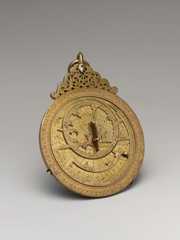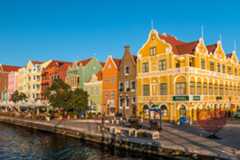Western colonialism
Our editors will review what you’ve submitted and determine whether to revise the article.
- What is colonialism?
- Which regions were primarily colonized by Western countries?
- What were the main reasons for Western countries to engage in colonialism?
- How did Western colonial powers maintain control over their colonies?
- What were some common political structures established by colonizers in their colonies?
- How did colonialism impact the political systems of the colonized regions?
- How did the political relationships between colonizers and colonies change over time?
- What effects did the end of colonialism have on global politics?
Western colonialism, a political-economic phenomenon whereby various European nations explored, conquered, settled, and exploited large areas of the world.
The age of modern colonialism began about 1500, following the European discoveries of a sea route around Africa’s southern coast (1488) and ofAmerica (1492). With these eventssea power shifted from the Mediterranean to the Atlantic and to the emerging nation-states of Portugal,Spain, theDutch Republic, France, and England. By discovery, conquest, and settlement, these nations expanded and colonized throughout the world, spreading European institutions andculture.
European expansion before 1763
Antecedents of European expansion
MedievalEurope was largely self-contained until the FirstCrusade (1096–99), which opened new political and commercial communications with the MuslimMiddle East. Although Christian crusading states founded in Palestine and Syria provedephemeral, commercial relations continued, and the European end of this trade fell largely into the hands ofItalian cities.
Early Europeantrade withAsia
The eastern land and sea routes terminated at ports in theCrimea, until 1461 at Trebizond (nowTrabzon, Turkey), Constantinople (now Istanbul), the EasternTripoli (in modern Lebanon),Antioch (in modern Turkey),Beirut (in modern Lebanon), andAlexandria (Egypt), where Italian galleys exchanged European for Eastern products.
Competition between Mediterranean nations for control of Asian commerce gradually narrowed to a contest betweenVenice andGenoa, with the former winning when it severely defeated its rival city in 1380; thereafter, in partnership with Egypt, Venice principally dominated the Oriental trade coming via theIndian Ocean andRed Sea to Alexandria.
Overland routes were not wholly closed, but theconquests of the Central Asian warriorTimur (Tamerlane)—whoseempire broke into warring fragments after his death in 1405—and the advantages of a nearly continuous sea voyage from the Middle East andEast Asia to the Mediterranean gave Venice a virtual monopoly of some Asian products, principallyspices. The word spices then had a loose application and extended to many imported luxuries, but the most valuable European imports werepepper,nutmeg,cloves, andcinnamon.
The Venetians distributed these expensive condiments throughout the Mediterranean region and northern Europe; they were shipped to the latter first by pack trains up theRhône Valley and, after 1314, by Flanders’ galleys to theLow Countries, westernGermany,France, andEngland. The fall of Constantinople to the Ottomans in 1453 did not seriously affect Venetian control. Although other Europeansresented this dominance of the trade, even the Portuguese discovery and exploitation of theCape of Good Hope route could not altogether break it.

EarlyRenaissance Europe was short of cash money, though it had substantial banks in northern Italy and southern Germany.Florence possessed aggregations of capital, and itsBardi bank in the 14th century and theMedici successor in the 15th financed much of the eastern Mediterranean trade.
Later, during the great discoveries, the Augsburg houses ofFugger andWelser furnished capital for voyages and New World enterprises.
Gold came fromCentral Africa bySaharan caravan from Upper Volta (Burkina Faso) near theNiger, and interested persons in Portugal knew something of this. When PrinceHenry the Navigator undertook sponsorship of Portuguese discoveryvoyages down the west coast of Africa, a principal motive was to find the mouth of a river to be ascended to these mines.
Technological improvements
Europe had made some progress in discovery before the main age of exploration. The discoveries of theMadeira Islands and theAzores in the 14th century by Genoese seamen could not be followed up immediately, however, because they had been made in galleys built for the Mediterranean and ill suited to ocean travel; the numerous rowers that they required and their lack of substantial holds left only limited room for provisions and cargo. In the early 15th centuryall-sails vessels, thecaravels, largely superseded galleys for Atlantic travel; these were light ships, having usually two but sometimes three masts, ordinarily equipped withlateen sails but occasionally square-rigged. When longer voyages began, thenao, orcarrack, proved better than the caravel; it had three masts and square rigging and was a rounder, heavier ship, more fitted to cope with ocean winds.
Navigational instruments were improved. Thecompass, possibly imported in arudimentary form from Asia, was gradually developed until, by the 15th century, European pilots were using an iron pin that pivoted in a round box. They realized that it did not point to the true north, and no one at that time knew of themagnetic pole, but they learned approximately how to correct the readings. Theastrolabe, used for determining latitude by the altitude of stars, had been known since Roman times, but its employment by seafarers was rare, even as late as 1300; it became more common during the next 50 years, though most pilots probably did not possess it and often did not need it because most voyages took place in the narrow waters of the Mediterranean orBaltic or along western European coasts. For longitude, then and many years thereafter,dead reckoning had to be employed, but this could be reasonably accurate when done by experts.
The typicalmedievalmap had been the planisphere, ormappemonde, which arranged the three known continents in circular form on a disk surface and illustrated a concept more theological than geographical. The earliest surviving specimens of theportolanic, or harbor-finding, charts date from shortly before 1300 and are of Pisan and Genoese origin. Portolanic maps aided voyagers by showing Mediterranean coastlines with remarkable accuracy, but they gave no attention to hinterlands. As Atlantic sailings increased, the coasts of western Europe and Africa south of theStrait of Gibraltar were shown somewhat correctly, though less so than for the Mediterranean.















